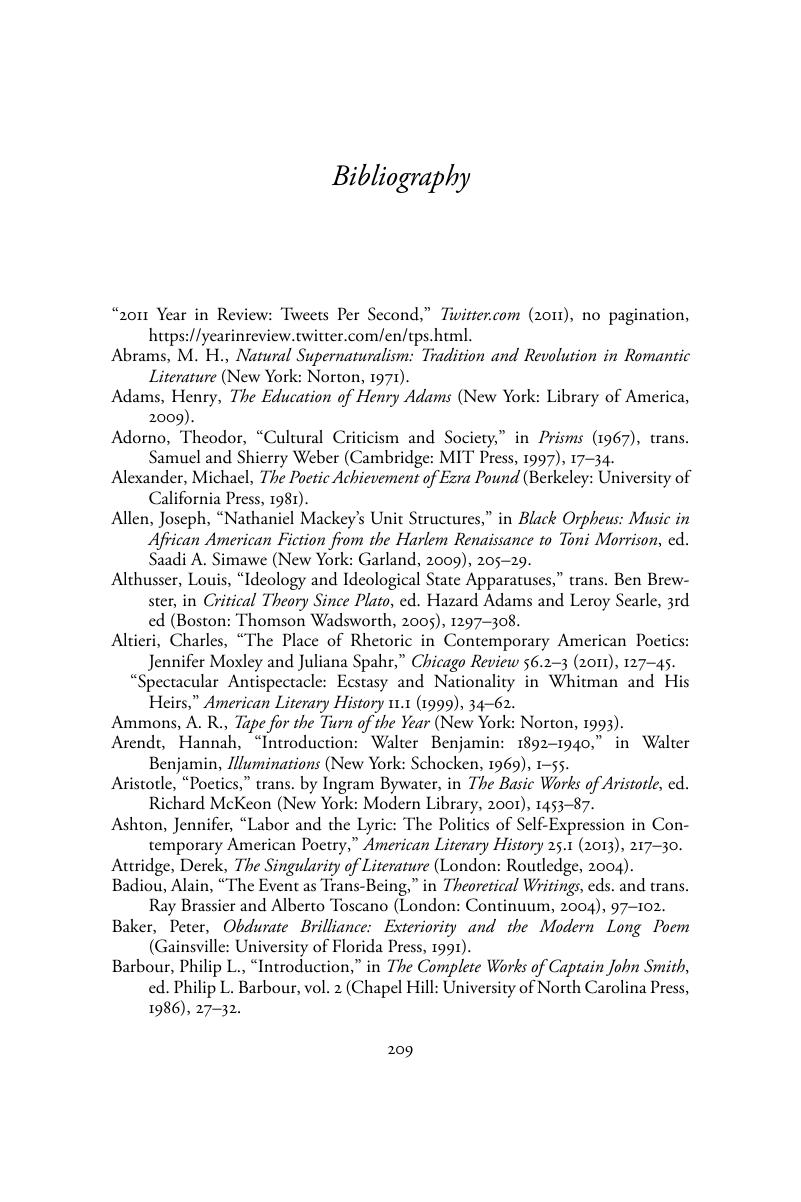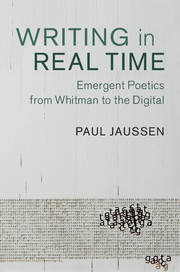Book contents
- Writing in Real Time
- Cambridge Studies in American Literature and Culture
- Writing in Real Time
- Copyright page
- Contents
- Acknowledgments
- Chapter 1 Introduction
- Chapter 2 Emergent America
- Chapter 3 Emergent Vocabulary
- Chapter 4 Emergent History
- Chapter 5 Emergent Midrash
- Chapter 6 Emergent Sounds
- Chapter 7 Conclusion
- Notes
- Bibliography
- Index
- Cambridge Studies in American Literature and Culture
- References
Bibliography
Published online by Cambridge University Press: 05 July 2017
- Writing in Real Time
- Cambridge Studies in American Literature and Culture
- Writing in Real Time
- Copyright page
- Contents
- Acknowledgments
- Chapter 1 Introduction
- Chapter 2 Emergent America
- Chapter 3 Emergent Vocabulary
- Chapter 4 Emergent History
- Chapter 5 Emergent Midrash
- Chapter 6 Emergent Sounds
- Chapter 7 Conclusion
- Notes
- Bibliography
- Index
- Cambridge Studies in American Literature and Culture
- References
Summary

Information
- Type
- Chapter
- Information
- Writing in Real TimeEmergent Poetics from Whitman to the Digital, pp. 209 - 221Publisher: Cambridge University PressPrint publication year: 2017
